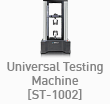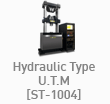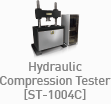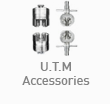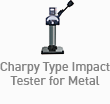Tags
- #Universal Material Tester
- #Material Testing Machine
- #Material Tester
- #Compression Testing Machine
- #UTM
- #Hardness Tester
- #Tensile Testing Machine
- #Tensile Test
- #Tensile Strength
- #Hydraulic Fatigue Testing Machine
- #Hydraulic Universal Material Tester
- #Fatigue Testing Machine
- #Hydraulic Servo Universal Material Tester
- #Hydraulic Servo Tensile Testing Machine
- #Environmental Chamber
- #ASTM F88
- #Peel Test
- #Adhesion Test
- #Sealing
- #Seal Strength
- #90 Peel
- #180 Peel
- #90Peel
- #180Peel
- #T-Peel
- #Heat Gradient Test
- #Heat Sealing Test
- #Soltech
- #Side Action Grips
- #Film Grips
- #SALT
| [ASTM] ASTM F88 Standard Test Method for Seal strength of flexible barrier materials | |
|---|---|
| Writer : 관리자(salt@light-salt.kr) Date : 24.05.07 Hit : 13 | |
| Tags : #Universal Material Tester,#Material Testing Machine,#Material Tester,#Compression Testing Machine,#UTM,#Hardness Tester,#Tensile Testing Machine,#Tensile Test,#Tensile Strength,#Hydraulic Fatigue Testing Machine,#Hydraulic Universal Material Tester,#Fatigue Testing Machine,#Hydraulic Servo Universal Material Tester,#Hydraulic Servo Tensile Testing Machine,#Environmental Chamber,#ASTM F88,#Peel Test,#Adhesion Test,#Sealing,#Seal Strength,#90 Peel,#180 Peel,#90Peel,#180Peel,#T-Peel,#Heat Gradient Test,#Heat Sealing Test,#Soltech,#Side Action Grips,#Film Grips,#SALT | |
| Attachments : | |
|
Hello~! This is Salt co.,Ltd. a specialized manufacturer of material property testing equipment.
Today, we would like to introduce the standard test method for seal strength of flexible barrier materials according to ASTM F88.
What is ASTM F88?
ASTM F88 specifies a method for testing the seal strength of thin plastic sheets or similar flexible materials. Such seals are widely used in the food and beverage industry and are also common in the field of bio-medicine. Many disposable products such as band-aids, catheters, and needles are packaged within sealed pouches. Seal strength testing combines aspects of adhesive testing and tensile testing of thin plastic materials, as the adhesive bond may separate or the flexible barrier material may tear.
ASTM F88 Test Method
Using a sample cutter, cut a 1-inch wide piece from the seal on all four sides of the package. Secure each leg of the test sample in the Peel Tester. Align the stronger side of the sample in the upper grip. The seal should be tested at a grip separation speed of 200 to 300 mm/min (8 to 12 in./min). Use a testing stand to peel the seal, continuously measuring the maximum force applied and the displacement.
Mounting ASTM F88 Specimens in Grips
For either the T-Peel or 180° Peel configurations, there are two specimen holding methods for T-Peel and one for 180° Peel. Each specimen is automatically adhered to alignment plates and secured in upper and lower grips for testing. Seal strength refers to the maximum force required to separate the two layers of flexible barrier material under specific conditions. This force is tested in three different ways: T-Peel "Method A" - This configuration is the standard T-Peel application where the adhered portion of the specimen remains unsupported during testing. T-Peel "Method B" - Similar to Method A, but the adhered portion of the specimen is supported by hand during testing. 180° Peel "Method C" - Method C involves adhering one side of the specimen to a base or alignment plate for 180° Peel testing. The side with the plate is inserted into the upper grip, while the other end of the specimen is secured in the lower grip.
Specimens should be cut to a width of 25mm, 15mm, or 25.4mm. Additionally, to comply with the standard, all specimens cut for testing under ASTM F88 must be performed according to ASTM D882, which tests the tensile and elongation properties of thin films. (Please refer to the link about ASTM D882 below.)
Equipment Required for ASTM F88
This equipment presses the film with a constant pressure to verify the heat-sealing state. SALT's Heat Gradient Tester ST-350 applies a gradient to five heating plates to achieve uniform sealing under equal time and pressure, precisely measuring the strength with a universal material tester or peel tester.
Please refer to the Heat Gradient Tester link below! https://www.light-salt.kr/eng/customer/info.php?ptype=view&idx=8443&page=1&code=info_eng
SALT's Universal Material Tester model capable of measuring ASTM F88 seal strength
SALT's Universal Material Tester and grips for T Peel tests
Salt Co., Ltd.'s all-purpose material tester provides a variety of grips, extensometers and test solutions to meet the requirements of physical property testing of various materials.
"We value our relationship with you more than just selling our products."
Salt-s@Light-Salt.kr www.light-salt.kr
|
|
| Prev | ASTM D1894 standard test method for measuring the coefficient of friction of plastic films |
| Next | ISO 6259-3 the international test method for determining the tensile properties of polyolefin heat- |
|
|
























